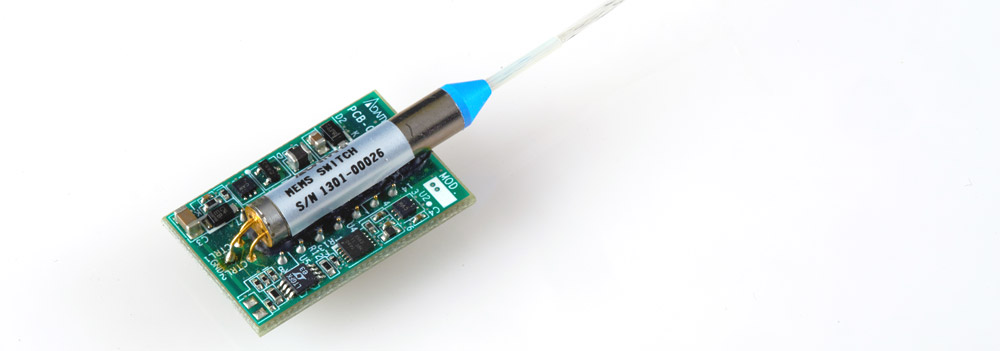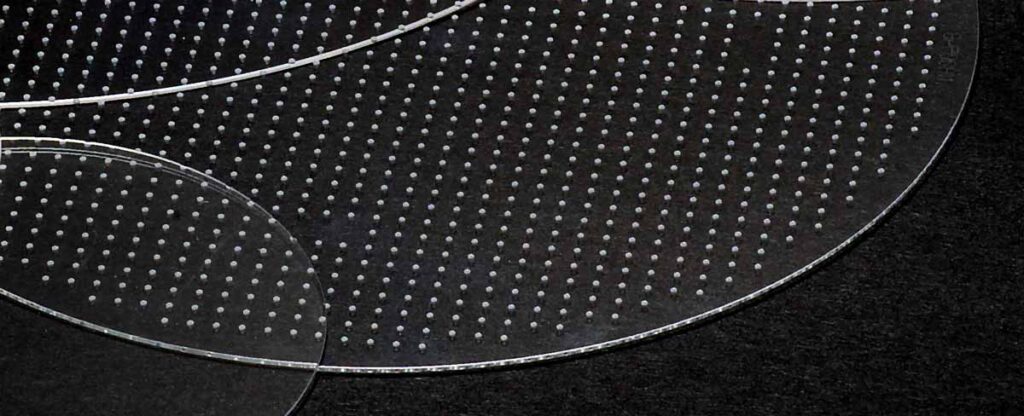Optical Switches and their significance in High-speed, Large-Capacity Optical Communications

Switches are important components of any communications network. Switches are found inside network connected devices and used to change data transmission paths when transmitting data between devices. By quickly changing the transmission pathway and sending data only to relevant devices, the total load on the network can be reduced.
With optical switches, it is possible to branch or re-route optical signals along a desired communication path without converting the signal into an electrical signal. Therefore, signals can be transmitted without compromising the advantages of high-speed optical communications.
Table of contents [close]
What are Optical Switches?
Optical communications use light to achieve high-speed, large-volume communications. This type of communication also requires high speed when switching between communication paths. Manual switches take too much time, and mistakes are inevitable. Electronic switches can be used for fast, reliable switching, but this requires the optical signal to be converted to an electrical signal, travel through the switch, and be converted back into an optical signal. This creates a bottleneck of data at each switch and the advantages of optical communication become diminished. Optical switches can split or re-route specific bits of data quickly and reliably, without the need for converting the signals to electrical signals.
Optical switches not only allow for high-speed switching, but they also increase the stability of optical communications. For example, if an interruption is detected in one communication path, the optical switch can switch to a different path in less than 10ms. During equipment maintenance, all communication routes can be diverted to a temporary path during the maintenance work and restored to the original path after the work is completed. This eliminates the risk of interruption of communication during maintenance works. Optical switches are indispensable components for the stability and maintenance of high-speed, large-capacity optical communication systems.
Different types of Optical Switches and how they work.
Optical switches can be broadly categorized into three types depending on the switching method: The Mechanical Method, the MEMS method, and the Optical Waveguide Method.
Mechanical Method
The mechanical method uses actuators to move optical elements such as mirrors and prisms to divert incoming optical data to different paths. For example, as shown in Figure-1, suppose that the light coming in from the input port is reflected by a prism and sent to output port 1. Moving the prism by an actuator will change the path of light and cause it to be transmitted through output port 2.

Mechanical switches are very simple in construction and easy to control. Power consumption is low since the actuator is energized only when switching occurs at different paths. However, because it contains moving parts, miniaturization is difficult. It is also difficult to apply mechanical switches to large-scale communications equipment since they require switching many routes simultaneously. Mechanical switches are mainly used in small-scale switching applications.
Micro-Electro Mechanical Systems (MEMS) Method
Micro Electro Mechanical Systems (MEMS) are devices in which mechanical components, sensors, actuators, and other components are fabricated on substrates such as silicon or glass with submicron level accuracy by photolithography and etching. Figure-2 shows an example of a MEMS optical switch. The device has two micro-machined mirrors. The path of the optical signal can be controlled by changing the angle of the mirrors.

MEMS type optical switches are capable of compact integration and high-speed operation and are ideal for large-scale switching applications. Although the switches require power to maintain the selected switch state, since they are small, power consumption is not large. High processing capabilities are required to manufacture robust MEMS chip structures since the parts are very small.
Optical Waveguide Method
Optical waveguide switches take advantage of the refractive index of substrates such as glass, silicon, polyimide, and others to guide optical signals to desired paths. The refractive indexes can be modified by an outside stimulus such as heat, light, and electricity. Such devices can be easily integrated into small components and have very low response times. However, refraction is practically synonymous with insertion loss. Various materials for optical waveguide switches are currently being researched around the world.
Faster. Smaller.
The speed and volume of communications, as well as the sheer volume of data being transmitted, has been increasing dramatically in recent years. This is also true in optical communications. If wavelength division multiplex (WDM) technology continues to advance, higher speed signal processing will certainly be required. This need cannot be met if all optical signals must be converted to electrical signals for switching. Optical switches that eliminate this bottleneck are becoming more and more urgent.
To support the stability of high-speed, large-volume optical communications, optical switches need to be highly reliable. In addition, optical switches must have high optical characteristics such as low insertion loss, flat wavelength-dependent loss, low polarization-dependent loss, and low crosstalk. In addition, demand for fast switching speed, miniaturization, and low power consumption will only increase in the future.
Inquiry
-
What is LiDAR? How it works, technologies, and applications

-
Fiber Optic Connector types and applications

-
Surface polishing technologies - Essential technologies for semiconductor, MEMS, and LED manufacturing

-
Multi-Core Fiber:The highly anticipated, next-generation high-speed communication technology

-
Optical filters: Essential components of high-speed, high-volume optical communications systems

-
Pioneering the Future of Multi-Core Optical Fiber Connections : Orbray's Optical Fiber Bundling and Light-Induced Self-Written Optical Waveguide Technology



